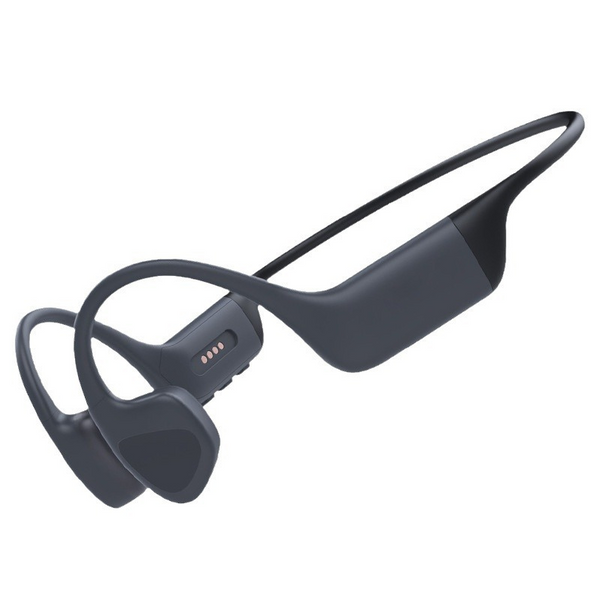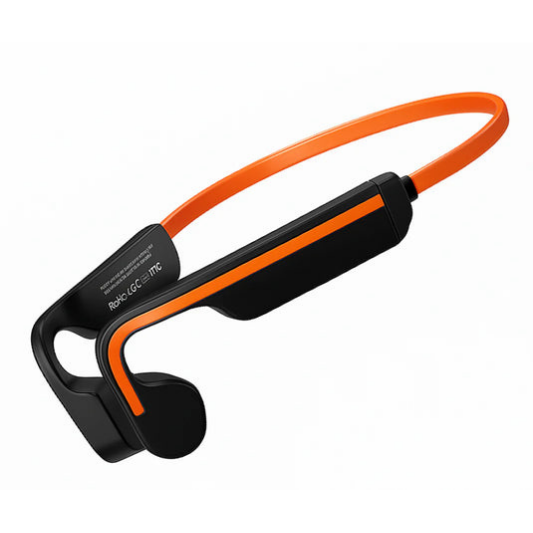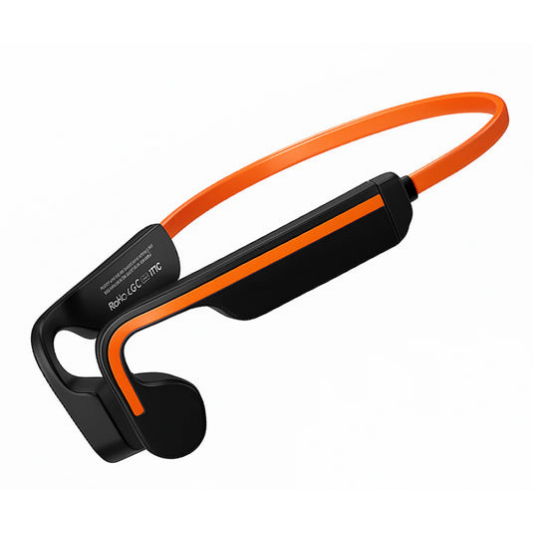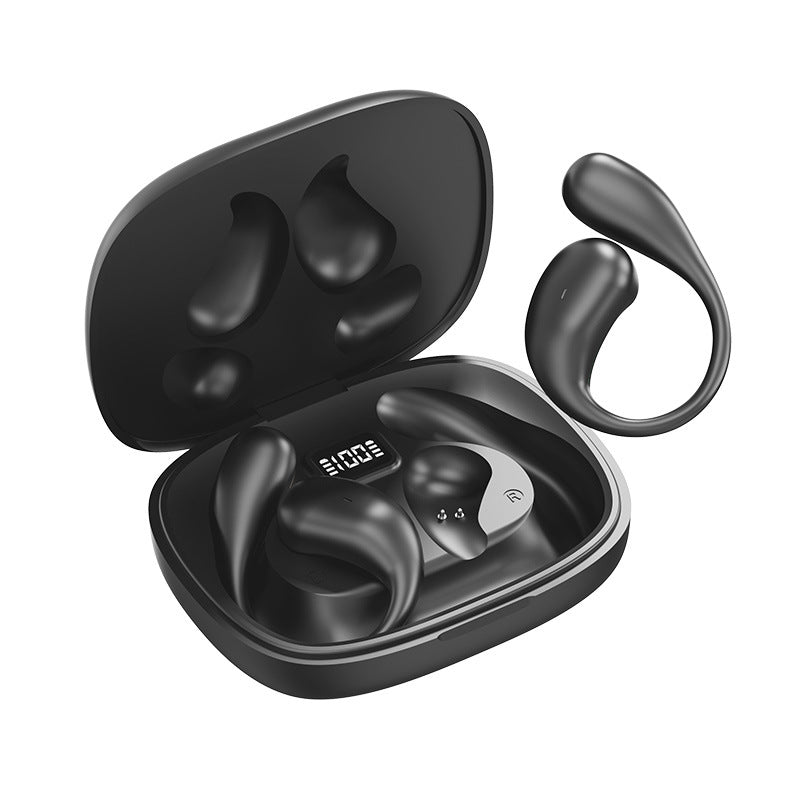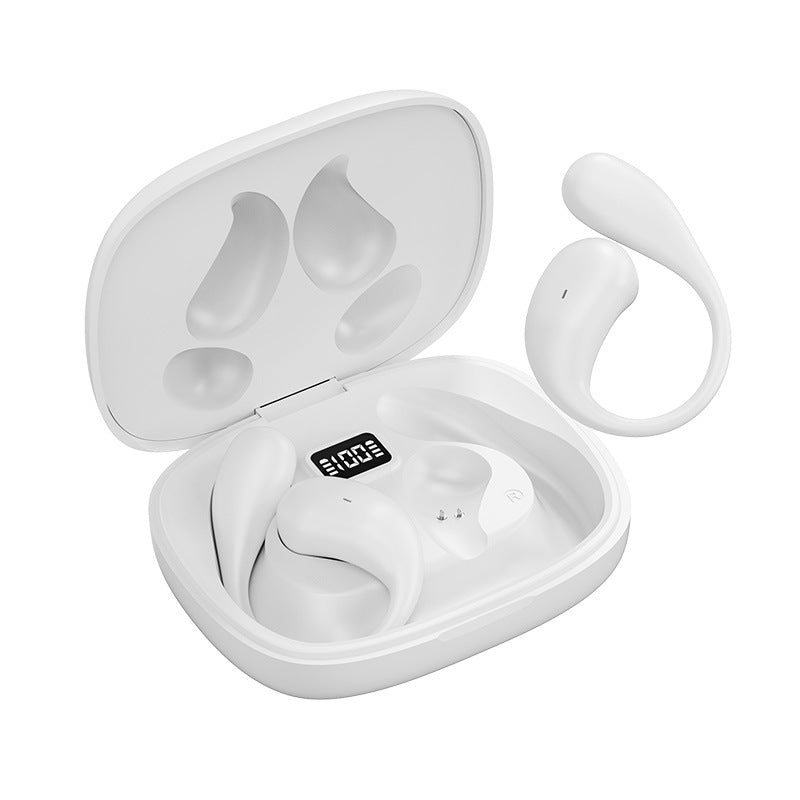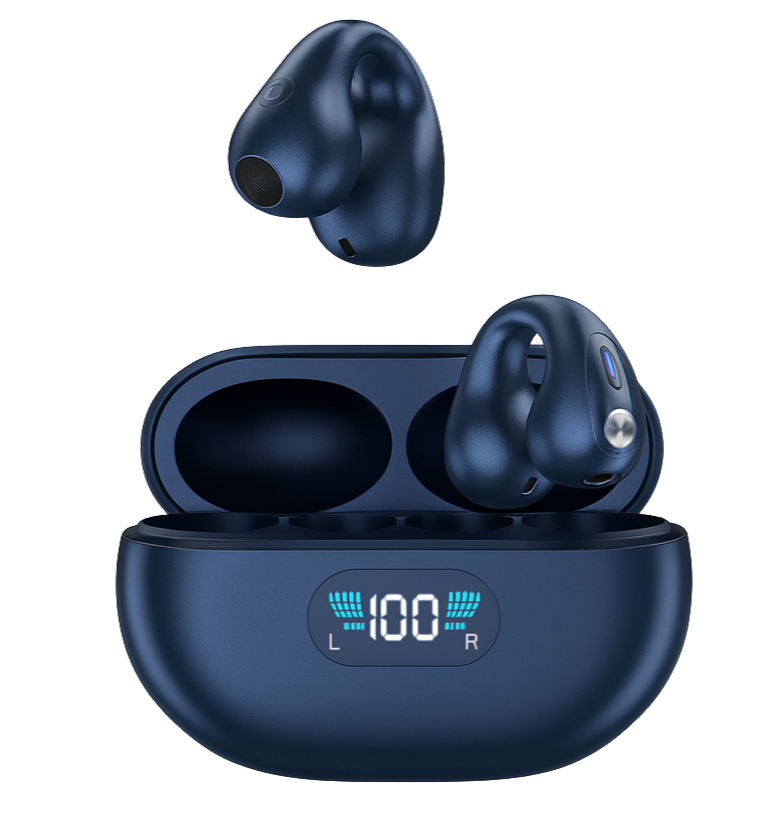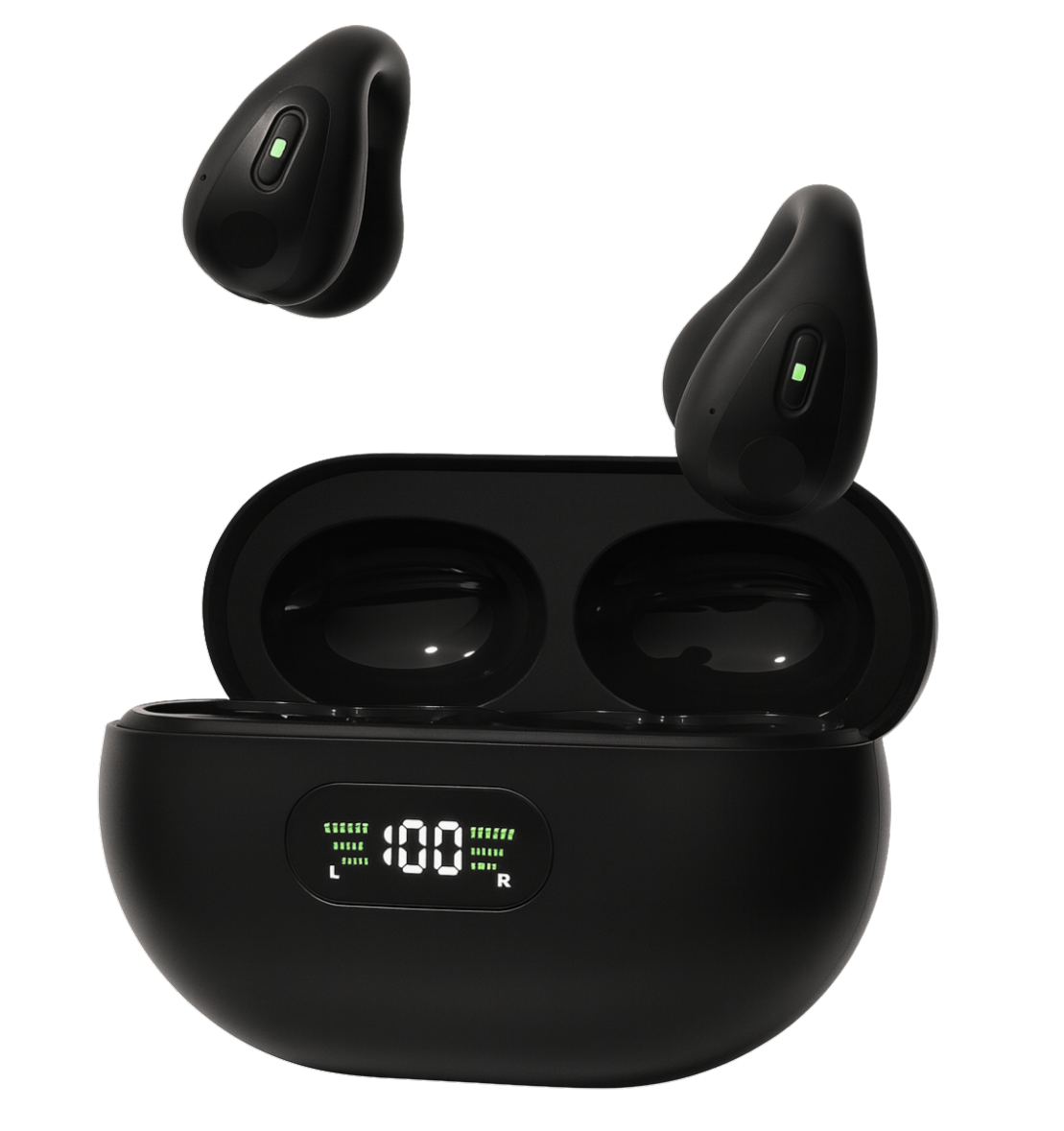Bone conduction headphones are loved for their comfort and innovative technology, allowing you to listen to music without blocking your ears. But one question often arises among glasses wearers: is it possible to wear this type of headset while keeping your frames on?
Between comfort, fit, and sound quality, the compatibility of these two accessories can raise some concerns.
In this article, we’ll see whether you can comfortably wear bone conduction headphones with glasses — and what precautions to take for an optimal listening experience.
Are Bone Conduction Headphones Compatible with Glasses?
The answer is yes — bone conduction headphones are perfectly compatible with glasses, provided they are positioned correctly and you choose an ergonomic model.
Designed to rest on the temples or just in front of the ears, these headphones don’t interfere with the arms of your glasses or put pressure on your ears.
However, a few adjustments are needed to ensure maximum comfort and consistent sound quality, especially during prolonged use.
How Their Design Supports Compatibility
Bone conduction headphones work on a simple principle: instead of transmitting sound through the ear canal, they use mechanical vibrations that travel through the skull bones to reach the inner ear.
This means your ears remain completely free, and the arms of your glasses can rest naturally without interfering with the sound transmission.
Unlike over-ear or in-ear headphones, bone conduction models don’t cover your ears. They rest gently on the area between the temples and cheekbones, where vibrations transmit best.
This open design makes them particularly comfortable for people who wear glasses — as they don’t create pressure or friction on the arms.
Users who wear prescription glasses or sunglasses can therefore listen to music, take calls, or follow conversations without discomfort.
That’s one reason why these headsets are recommended for athletes and professionals who wear glasses regularly.
Proper Positioning to Avoid Discomfort
Even though compatibility is excellent, correct positioning remains key to total comfort.
Generally, the arms of glasses rest above the ears, while the transducers of bone conduction headphones should be placed just in front, over the cheekbones.
To avoid pressure points:
-
Put on your glasses first, then the headphones over them.
-
Make sure your glasses fit snugly and don’t move when the headset applies slight pressure.
-
Align the transducers correctly with your temples to ensure good sound conduction.
Incorrect placement may reduce sound quality or cause tension on the sides of the face.
Fortunately, most modern models — such as those from ImaxSound — feature flexible bands and soft materials that easily adapt to your head shape.
Everyday Comfort: Glasses + Bone Conduction
Glasses wearers particularly appreciate the lightness of these headphones.
Unlike traditional models, which can be bulky or tight, bone conduction headsets usually weigh less than 30 grams, allowing hours of use without pressure or fatigue.
Moreover, bone conduction technology provides a unique benefit: it avoids that “closed-off” feeling of traditional headphones.
You can enjoy your music while remaining aware of your surroundings — an essential point for people who work, move around the city, or exercise outdoors.
Headphones like the ImaxSound Sport Bone Conduction Headset offer stable support even during movement.
Thanks to their ergonomic titanium frame, they adapt perfectly to your head without interfering with your glasses.
A Few Tips for Maximum Comfort
While bone conduction headphones are compatible with glasses, these extra tips can make them even more comfortable:
-
Avoid thick frames that could slightly push the headset away from your face and affect sound transmission.
-
Choose a back-headband design, which frees up the sides of the face and leaves more space for the glasses’ arms.
-
Clean the contact area between the transducers and your skin regularly to avoid slipping caused by sweat.
-
Keep the volume moderate — since the sound is transmitted by vibration, high levels may cause slight discomfort if your glasses are tight.
By following these tips, you can easily use bone conduction headphones daily — even with glasses — without sacrificing sound quality or comfort.
An Ideal Solution for Active Glasses Wearers
In short, bone conduction headphones are entirely compatible with glasses as long as they’re properly adjusted.
Their open design, lightweight comfort, and stable fit make them a perfect option.
Whether you’re a cyclist, runner, office worker, or music lover, these headsets offer a balanced and pleasant listening experience without interfering with your frames.
Recent models — like those from ImaxSound — go even further with flexible bands, water resistance (IPX5), and extended battery life, ensuring smooth everyday use.
How to Choose a Comfortable Bone Conduction Headset for Glasses Wearers
Choosing the right bone conduction headset when you wear glasses requires special attention.
Although the technology itself is naturally compatible, some models offer far greater comfort than others.
To enjoy an enjoyable, pressure-free experience, consider the following key factors: design, ergonomics, materials, weight, and sound performance.
1. Ergonomic Design for Glasses Wearers
The first criterion to check is design.
A good bone conduction headset should adapt to your face’s shape and not interfere with the glasses’ arms.
Opt for back-headband models — those that go behind the head instead of over it.
This style frees the sides of your face and avoids direct contact with your frames.
Ergonomic headphones like those from ImaxSound rest gently on your cheekbones without creating pressure on your temples.
Their flexible structure follows the natural shape of your face, ensuring stability during movement — even with glasses on.
The contact points should sit just in front of your ears, not on the glasses’ arms.
This positioning ensures both comfort and efficient sound transmission to the cochlea.
2. Soft, Lightweight Materials for Extended Wear
Material choice is crucial for comfort — especially if you wear glasses all day.
The best bone conduction headsets are made from flexible titanium, medical-grade silicone, or light reinforced plastic.
These materials naturally adjust to your head’s shape without applying too much pressure.
A weight under 35 grams is ideal — it minimizes fatigue and prevents pressure marks around the temples.
Heavier models may become uncomfortable after several hours, particularly with thick-framed glasses.
Some headsets also feature anti-slip coatings or soft-touch finishes, improving stability and reducing friction.
This blend of flexibility and lightness is essential for anyone who wants to enjoy music, calls, or workouts without interruption.
3. Adjustable and Personalized Fit
A comfortable headset should adapt to different face shapes.
Look for adjustable models with flexible bands or movable transducers to control pressure on the cheekbones.
If you wear thick glasses, this feature helps prevent the arms from getting trapped between your headset and skin.
A proper fit also maintains stable audio quality, since bone conduction requires constant contact with the bone to transmit vibrations effectively.
Finally, make sure your headset suits your needs: some are designed for sports (with reinforced stability), others for remote work or commuting.
Choosing one that fits your lifestyle greatly improves comfort.
4. Balanced and Clear Sound Technology
While comfort is essential, sound quality should not be overlooked.
Top bone conduction headsets balance clear vocals, crisp highs, and controlled bass.
If you wear glasses, choose a model that maintains consistent sound even at low volumes, avoiding the need to turn it up if your glasses slightly separate the headset from your skin.
Modern models like the ImaxSound Premium Bone Conduction Sport Headset feature optimized vibration technology, enhancing sound precision while reducing sound leakage.
This ensures a natural listening experience — even with perfectly adjusted glasses.
A good headset should also offer smart noise reduction without isolating you completely — the core strength of bone conduction: listening while staying aware of your surroundings.
5. Durability and Battery Life
Durability matters, especially if you use your headset frequently.
Choose a sweat- and water-resistant model (rated IPX5 or higher) so it stays flexible and comfortable even during intense use.
As for battery life, a comfortable headset should minimize recharging.
Top-performing models offer 8 to 10 hours of continuous listening — perfect for long days or workouts.
Also, check for Bluetooth 5.2 or higher, which guarantees stable sound and reduced latency during calls or music playback.
How to Wear Glasses with Bone Conduction Headphones
Wearing bone conduction headphones with glasses is absolutely possible — you just need to position both accessories properly.
Thanks to their open design, these headphones adapt easily to your face, even with thick frames.
Here’s how to ensure maximum comfort and sound quality:
-
Put on your glasses first
Start by putting on your glasses before the headset. This allows you to properly adjust the arms behind your ears without interference. Once they’re in place, they’ll guide where to position your headphones. -
Place the transducers on your cheekbones
Position the speakers just in front of your ears, over your cheekbones — where vibrations travel best through the skull. The headset should rest lightly on your skin without moving your glasses. -
Adjust the back headband
If your model has a rear band, make sure it aligns naturally and doesn’t pull on your glasses.
Premium models from ImaxSound are designed to fit snugly without pressure. -
Check headset stability
Move your head slightly to ensure the headset stays in place. It shouldn’t slip or press on your temples.
If uncomfortable, adjust the transducers or your glasses for the best balance. -
Keep the volume moderate
With glasses, a moderate volume helps prevent strong vibrations on the temples and ensures lasting comfort — especially for long listening sessions. -
Choose a light, flexible model
Headsets designed for sports or daily use are often made from titanium or silicone, adapting easily to different face shapes, including glasses wearers.
By following these steps, you’ll fully enjoy the benefits of your bone conduction headset while keeping your glasses perfectly stable and comfortable.
This combination ensures natural, safe, and uncompromised sound quality.

